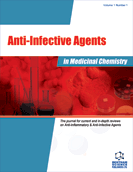Abstract
Tuberculosis (TB) has remained an enemy of humankind before the beginning of recorded history. Although it is curable and preventable, TB claims the lives of more than 5,000 people every day. Despite of availability of effective chemotherapy and BCG vaccine in 21st century, TB remains one of the most deadly infectious diseases. The concomitant resurgence of TB with the Multi-drug resistant (MDR) or Extremely drug resistant (XDR)-TB and HIV/AIDS pandemic raises the threat posed by untreatable and fatal human TB, exposing the frailties of the current drug armatorium. No new drug is available acting through novel mechanism since last 40 years. The genome of Mycobacterium tuberculosis H37Rv was sequenced in 1998 and reannotated in 2002. This coupled with development of new genetic tools, have greatly contributed to the discovery of potential drug targets for new anti-TB agent. It is increasingly acknowledged that new drugs should not only be active against drug resistant TB, but should also kill persisters and shorten the lengthy TB treatment, which underlies the problem of drug resistance due to poor compliance to the length of therapy. This review article describes the current TB drugs, their merits and demerits as well as the new promising anti-TB agents classified on the basis of molecular framework. It is a comprehensive literature compilation on the present research paradigm of anti-TB drug discovery including advances in the new structural analogs reported in last decade.
Keywords: Mycobacterium tuberculosis, MDR, &, XDR TB, novel targets, ligands
 23
23





















